8 Wildflowers That Grow in Kentucky (With Pictures)
-

- Last updated:
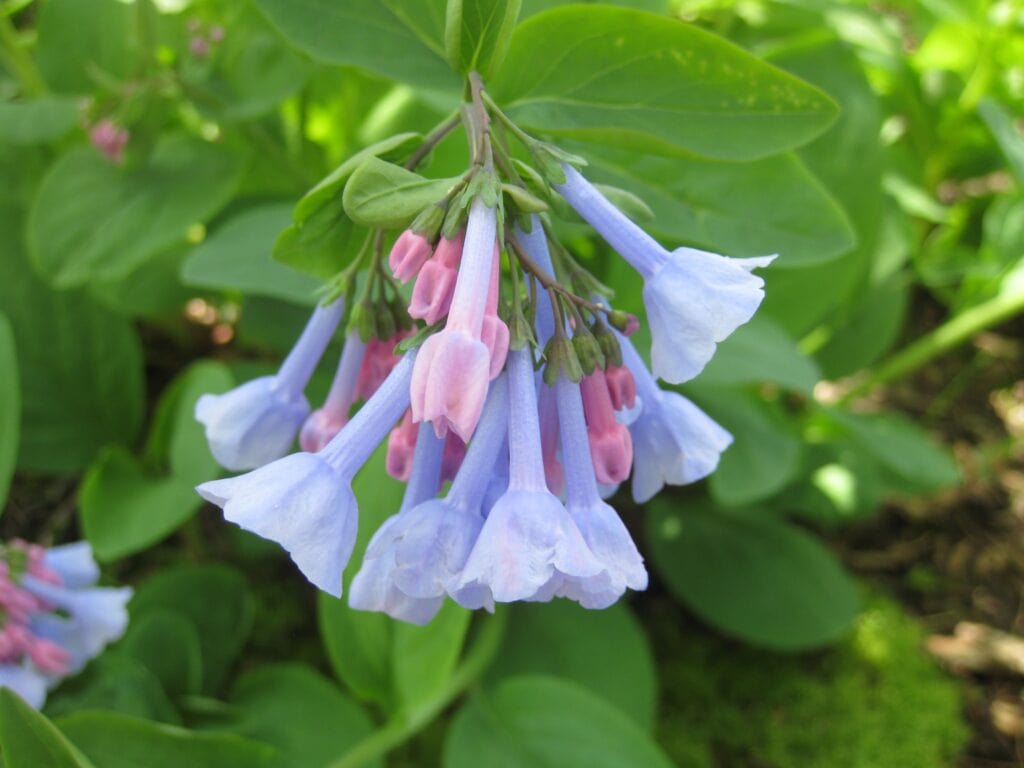
Kentucky is a true wildflower garden. It is home to hundreds of wildflower species, with some native to the state and easier to grow. You can also find subspecies and exotic, colorful beauties that adapt well to the local environmental and climatic conditions.
Are you looking to create vast wildflower meadows in Kentucky?
We narrowed our list to analyze eight of the most common wildflower species in the state. Dive in for in-depth details about their preferred habitats. We will also share pictures of these wildflowers and tell you when to expect bloom time.
 The 8 Wildflowers That Grow in Kentucky
The 8 Wildflowers That Grow in Kentucky
1. Virginia Bluebells
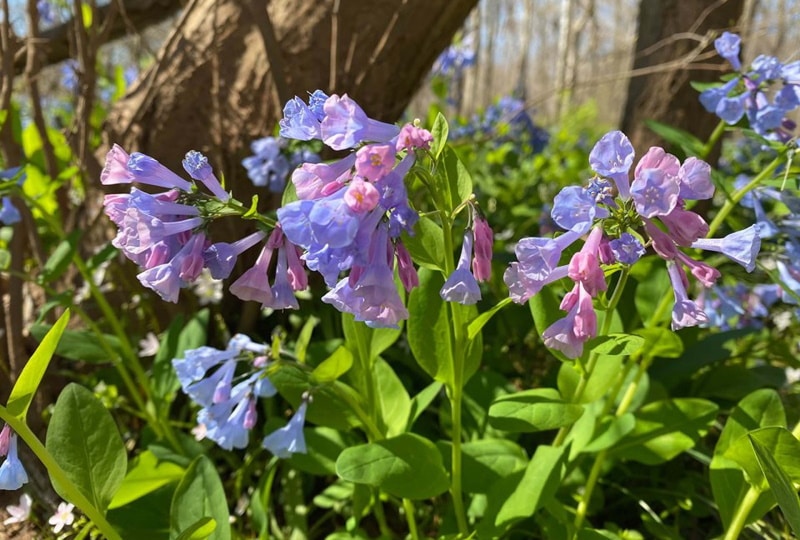
| Scientific Name: | Mertensia virginica |
| Flower Color: | Pink, blue, purple |
| Hardiness Zone: | 3 to 9 |
| Bloom Time: | Early spring to early summer |
The Virginia bluebell, also known as Virginia cowslip, Eastern bluebell, Roanoke bell, and lungwort oyster leaf, is native to southern Canada and the northeastern states in the United States. The wildflower prefers USDA hardiness zones three to nine.
Bloom time for this ephemeral perennial starts in early spring and lasts through early summer before it goes dormant.
When Virginia bluebells bloom, they are quite spectacular to look at in masses. The erect plant has smooth gray-green foliage and develops clusters of pink buds. These buds open into trumpet-shaped blooms with a light blue hue.
Virginia bluebells grace the air during bloom time with a delicate, sweet fragrance.
Habitat
Virginia bluebells thrive in moist, shady woodlands and clear river bottoms. They do best in locations where the soil pH ranges between 6.8 and 7.2.
Within home gardens, these gorgeous wildflowers combine well with other wildflower species that bloom in spring. You can pair them with the bleeding heart, yellow daffodils, Trillium grandiflorum, and celandine poppy. Virginia bluebells attract pollinators like hummingbirds and bumblebees that depend on the wildflowers as a food source.
2. Bloodroot
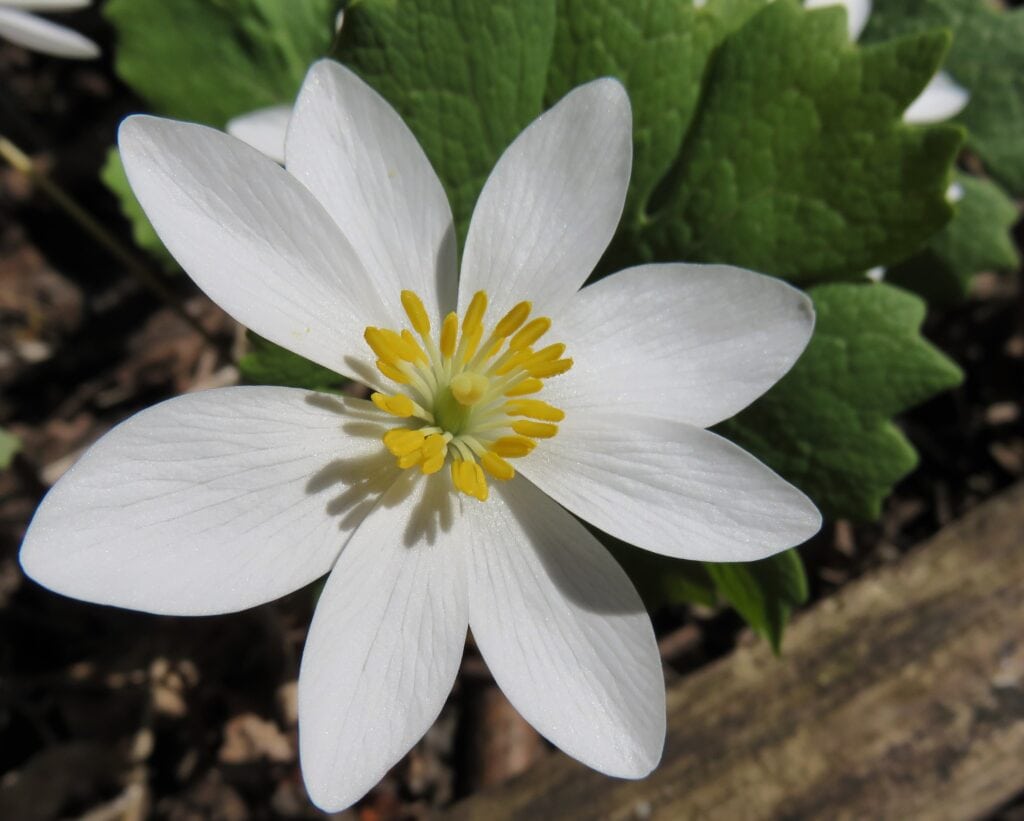
| Scientific Name: | Sanguinaria canadensis |
| Flower Color: | White with yellow stamen |
| Hardiness Zone: | 3 to 8 |
| Bloom Time: | Late winter and early spring |
Bloodroot is native to mid-western and eastern North America. It also goes by the name red puccoon and is a common sight in deciduous woodlands in hardiness zones three to eight.
The ornamental wildflower puts up a show in late winter and early spring. It produces a cup-shaped flower with eight white petals and a bright yellow stamen. Each bloom is accompanied by a single round leaf.
Natives nicknamed the bloodroot the red puccoon because of its red-orange rhizome that can be squeezed to produce red juice. While they mainly used the juice for dye making, it was also a herbal medicine used to treat ulcers, skin infections, fever, and ringworm.
Bloodroot is poisonous, and ingesting it can cause severe vomiting and loss of consciousness. Still, today’s wild populations of the plant are dwindling because of the unfounded claims that it can treat cancer.
Habitat
Bloodroot wildflowers thrive in moist, wet areas with morning sun and afternoon shade. Also, they like soil with a pH of 6.8 to 7.2.
You can give bloodroots maximum chances of survival by planting them in the fall. The idea is to allow effective root growth before the summer heat kicks into force. Furthermore, add compost or organic matter to the soil to achieve the desired pH and enhance drainage and aeration.
3. Rhododendron Catawbiense
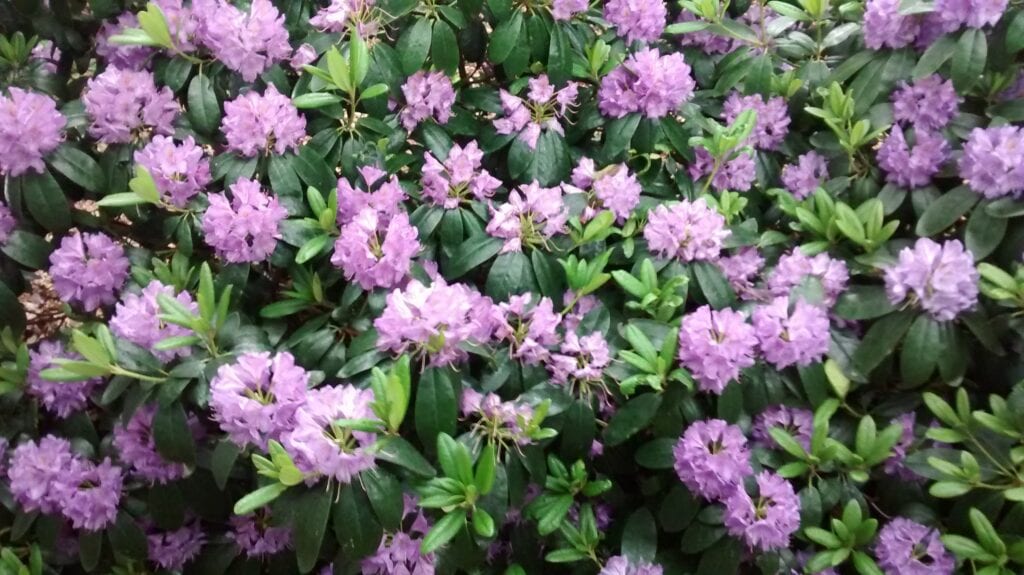
| Scientific Name: | Rhododendron catawbiense |
| Flower Color: | Lilac-purple |
| Hardiness Zone: | 4 to 8 |
| Bloom Time: | Mid-spring to early summer |
If you go hiking in southeastern Kentucky, it’s hard to miss the showy display of Rhododendrons. These bright spring wildflowers are in full force from as early as mid-spring. Rhododendrons have evergreen shrubs with broad oval-rounded leaves. They form large clusters of gorgeous lilac-purple blooms during mid-spring to early summer.
Rhododendrons are eastern US natives and tend to thrive easily under the right conditions. Each cluster can have up to 20 funnel-shaped nectar-rich flowers. Moreover, a Rhododendron shrub can live up to 100 years with minimal care.
Habitat
Rhododendrons make perfect shade plants because they love moist, well-drained soils. To ensure the shrubs thrive and grow between six and ten feet tall, plant them on acidic soil and away from areas of high winds. Also, note that all parts of Rhododendrons are toxic to humans and pets.
4. Virginia Spring Beauty

| Scientific Name: | Claytonia virginica |
| Flower Color: | White or pinkish with dark pink veins |
| Hardiness Zone: | 5 to 9 |
| Bloom Time: | Early spring |
Spring beauty is a woodland perennial that can grow to a height of one foot. Early spring marks the beginning of the bloom season when the plant produces pink or whitish flowers streaked with pink veins. Each flower has up to six petals and a yellow circle at the bottom to direct potential pollinators to the nectar.
Something interesting about spring beauty is that this wildflower only opens on sunny days. After all, this is when potential pollinators are likely to be out and about. Natives would use the wildflower’s behavior to forecast looming storms.
The spring beauty’s leaves and roots can be consumed raw or cooked. While the leaves have a mild flavor, the roots are rich in starch and have an appealing nutty flavor.
Habitat
Spring beauty wildflowers thrive in rich woods and thickets. They are a common sight in forests and some wetlands. If you want to grow them in your yard, ensure you choose a spot with part shade and rich, moist soil with high humus. Also, remember to do your soil tests and ensure the pH is at 6.8.
5. Early Goldenrod

| Scientific Name: | Solidago gigantea |
| Flower Color: | Yellow |
| Hardiness Zone: | 3 to 8 |
| Bloom Time: | Summer to fall |
The goldenrod wildflower is a perennial that can mature to three to seven feet tall. It was designated as Kentucky’s official state flower in 1926. Goldenrods have thin, toothed, or smooth-edged leaves and develop clusters of showy yellow flowers in summer.
The generic name “Solidago” means “I make whole” in Latin. While the healing qualities of goldenrod are generally not backed with science, many claim it can reduce fever and inflammation and even treat severe health conditions like gout, bladder, and kidney disease.
Habitat
Goldenrods are found in just about every habitat type. You can find vast plant fields in woodlands, mountains, fields, and swamps. They are also common along roadsides. Generally, goldenrods crave full sun for optimal blooming. However, they can also grow in shady locations, although this may reduce flowering.
Moreover, this wildflower is not overly picky with soil. It can tolerate rocky, clay, and even sandy soils as long as they are well-drained and with a pH ranging from acidic to neutral.
6. Bachelor’s Button
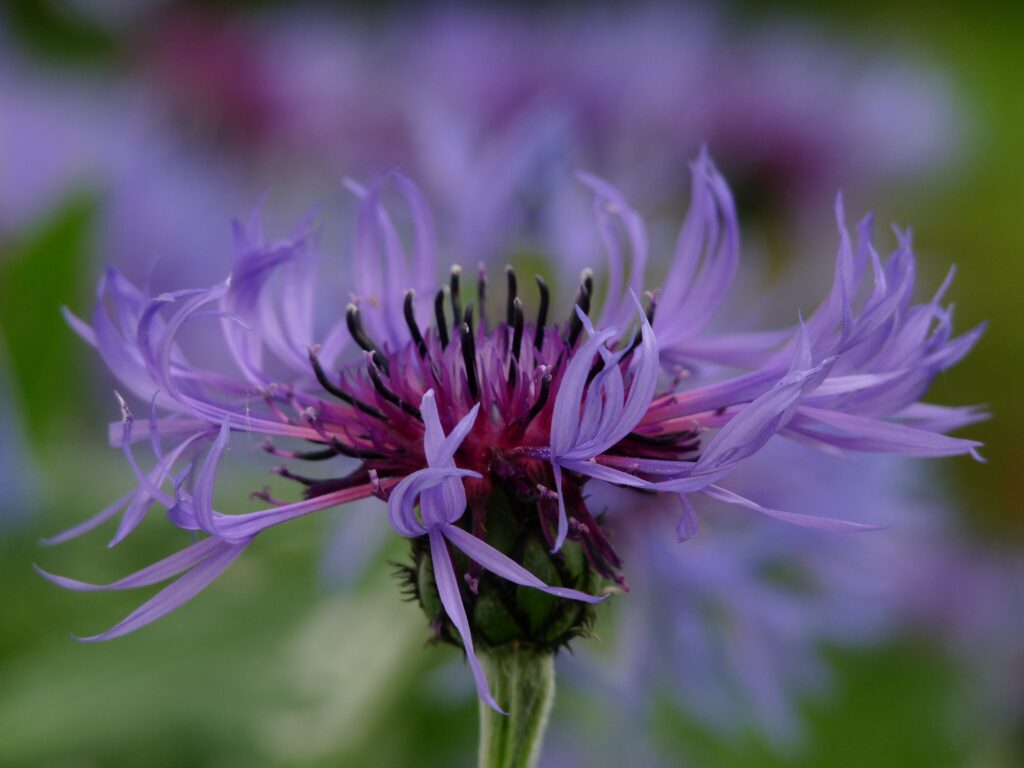
| Scientific Name: | Centaurea cyanus |
| Flower Color: | Brilliant blue |
| Hardiness Zone: | 2 to 4 |
| Bloom Time: | Late spring to late summer |
The Bachelor’s button wildflower has naturalized in Kentucky. While it is native to Europe, it is a common sight across North America in temperate gardens. This wildflower produces star-like brilliant blue flowers between late spring and late summer. Because it is an annual herb, you can expect its intense blue blooms to return yearly!
Each showy bloom has a diameter of about two to five centimeters. It grows on a gray-green stem that can be as long as one meter tall. Small, narrow, and jagged petals cluster around the center disc to give the flower a star-like appearance. These petals are edible, although most people love the Bachelor’s button blooms for their frilly, delicate looks.
Habitat
Bachelor’s Buttons thrive in dry disturbed areas, and you can find them in grasslands, fields, riverbanks, roadsides, and meadows. They generally prefer spots with full sun to light shade, provided the soil is well-drained.
A good reason to introduce them to your yard is that Bachelor’s button wildflowers are a powerful magnet for butterflies in Kentucky. Moreover, the flowers are pest-resistant and drought-tolerant once established.
7. Fleabane
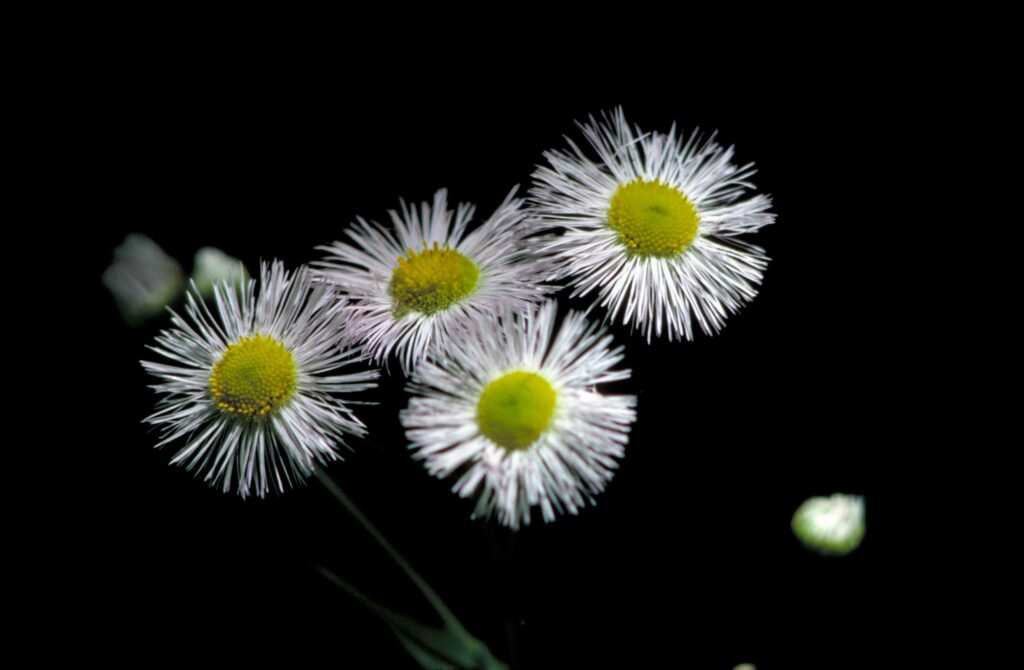
| Scientific Name: | Erigeron annuus |
| Flower Color: | White with a yellow center disk |
| Hardiness Zone: | 2 to 8A |
| Bloom Time: | Spring to fall |
Fleabane wildflowers are gorgeous with hairy, coarsely-toothed leaves. However, they stand out for their ray-like blooms and sweet but mild fragrance. In spring, fleabanes produce flowers with 50 to 120 white, thin, and delicate petals attached to a yellow central disk.
Compared to the diameter of the central disk, the white petals look somewhat short. Still, the visual appeal of fleabane blooms makes the plant attractive to hummingbirds, moths, bees, and butterflies. The name “fleabane” derives from the superstition that dried clusters of the plant can deter fleas from setting camp in your residence.
Habitat
Fleabanes bloom enthusiastically in disturbed fields. You can find them growing in abandoned lots, along railroads and roadsides, and in pastures and grasslands. They also have a fondness for the conditions around dry prairies and disturbed open woods.
Generally, fleabanes prefer full or partial sun provided the soil is moist and well-draining. These wildflowers are not picky about soil characteristics and will even thrive when grown on gravel or clay. However, fleabanes produce considerably bigger blooms under the right growing conditions.
8. Tall Buttercup
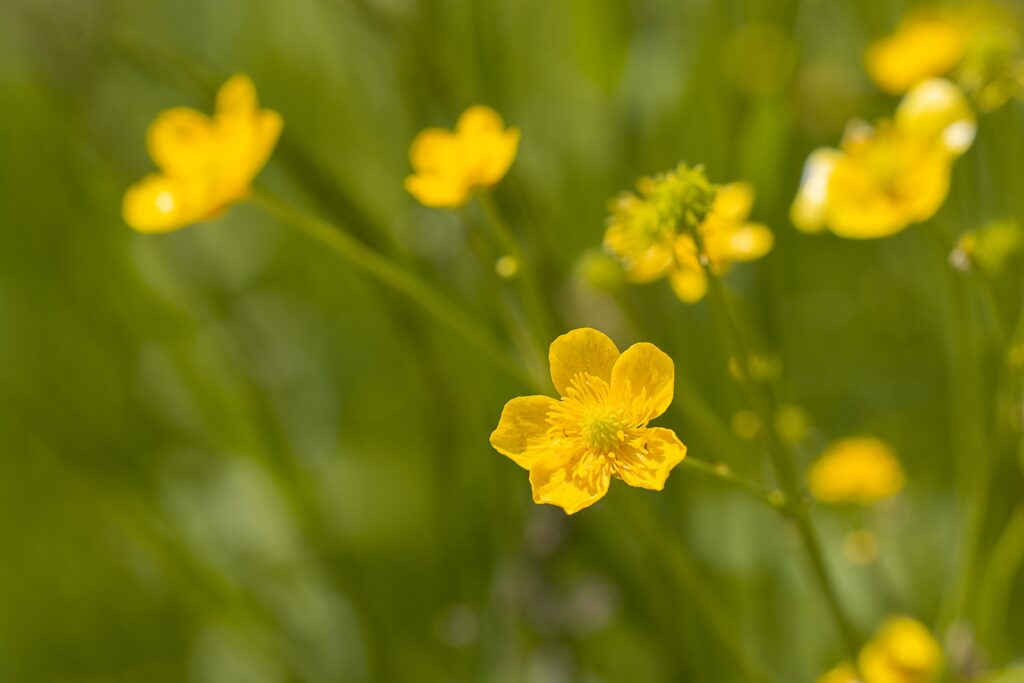
| Scientific Name: | Ranunculus acris |
| Flower Color: | Bright yellow |
| Hardiness Zone: | 4 to 10 |
| Bloom Time: | Spring and summer |
There are over 600 species of buttercups worldwide. Kentucky boasts four species, including the small flower, creeping, bulbous, and tall buttercups. While these species have flower heads with striking similarities, they differ in their leaf characteristics.
The tall buttercup has signature bright yellow blooms and an erect, hollow stem that can grow up to 90 centimeters tall. Its leaves are kidney-shaped and deeply lobed with three distinct projections from the midrib. The lobe ends are toothed to give the wildflower quite interesting aesthetics.
Habitat
Buttercups grow naturally in Kentucky’s moist disturbed fields, meadows, and roadsides.
Usually, tall buttercups require shade and cool temperatures to grow during their first year. Once mature, they love full to partial sun and depend on solar energy to absorb enough warmth to pollinate. Plant your buttercups in sandy, acidic, and well-draining soil for top-quality blooms. Under the right conditions, buttercups bloom for six weeks yearly for up to 10 years!
Final Thoughts
There are over 150 wildflower species native to the US, with a decent number of these varieties confined in the east-south-central region. Kentucky alone boasts over 30 native species, but who’s counting?
Our list is incomplete and only highlights some common but gorgeous wildflower options in the state. These varieties thrive easily, thanks to their in-built natural defenses against local pests and plant diseases.
- Related Read: How to Grow a Wildflower Garden – 10 Tips & Tricks
Featured Image Credit: JumpStory
Contents
 The 8 Wildflowers That Grow in Kentucky
The 8 Wildflowers That Grow in Kentucky